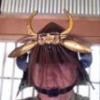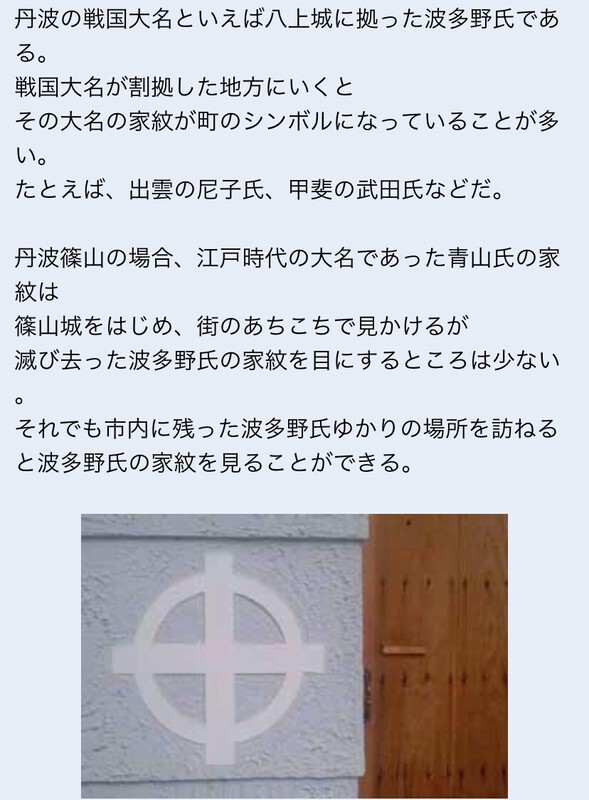-
Posts
13,699 -
Joined
-
Last visited
-
Days Won
246
Content Type
Profiles
Forums
Events
Store
Downloads
Gallery
Everything posted by Bugyotsuji
-
Hello ET! I am just about to go out, but at a glance your fine gun is from Sakai, Osaka, from the early to mid 1800s; it has been converted with nipple and stronger leaf spring from matchlock to percussion fire, around... 1830-1840 ish. (Maybe the serpentine was also changed from ‘shinchū’ brass to iron at the same time, to work as a hammer on the percussion caps.) The barrel may be rusted in, and the stock woodwork has probably shrunk slightly, but some taps with a rubber hammer may help to free it. Remove the ramrod, and stand the matchlock upright, and with your fingertips on the upper stock, knock the barrel out into your left hand. (To start with. If not successful, go to Plan B.)
-

Love when this happens- need signature confirmation help for menuki
Bugyotsuji replied to Mantis dude's topic in Tosogu
Just playing with 為秀 and 秀為 Tamehide, Hidetame, Hidei, Shūi etc. -

Single character on brass lock plate
Bugyotsuji replied to Bugyotsuji's topic in Translation Assistance
https://codh.rois.ac.jp/char-shape/unicode/U+5E02/ Having looked at this page, however, Ichi/Shi 市 does seem to fit in some cases... hmm... -
Greetings, good planet people. This single Kanji was stamped there by a hinawajū locksmith, probably recognized at the time by those around. How many readings can we get from it? So far I can maybe see ネ、令、or maybe the ‘hen’ 示、or 衣? Surely not 吉,市 or 京? The matchlock is not signed but I know the school of gunnery, so my suspicions fall upon Kunitomo. None of the listed locksmiths there have a likely candidate character in their name though. This character might… help narrow down the place of manufacture. 😊
-
You’ll find that some artisans changed their Kanji slightly on purpose. This can be a way of individualizing, and for you, cross-checking if it’s the same person or not. The correct form is 吉 with a longer upper line, said to be samurai 士 at the top. An alternative ‘non-correct’ form can sometimes be found with earth 土 on top (among kabuto makers too). Make a mental note as you compare with others. So, does Akiyoshi do this deliberately? Or has a faker added a ‘wrong’ stroke as a sign on purpose, which is a way for some to assuage their conscience.
-
Word of warning re importing a... a... ssshhhhh.... For a dealer who is used to importing, there will surely be little tricks involved, but even so I reckon they take a gamble each time as you cannot know which customs officer you will get. Each officer will interpret the rules differently, none of them understanding the changing regulations completely, and as soon as someone objects an endless chain of bureaucracy can ensue, with no one wishing to take responsibility, all erring on the side of safety, consuming weeks and months of fruitless headbang, and in the worst scenario, confiscation of the article, regardless of how 'right' you may actually be on paper. The word? Oh, yes, even if you do everything correctly there is a definite element of risk, a gamble. And some things even get stolen, but I won't go into that here! Good luck with whatever you choose, and keep us updated!
-

Edo Period Corner Part II
Bugyotsuji replied to estcrh's topic in General Nihonto Related Discussion
Mal X content, thanks for the link. Must have been posted by my evil twin. I was tempted to put the red cross into that thread, actually... On another note, I hope to be updating this thread shortly with regards to the new pan lid/cover for the latest Sakai long gun. I have asked the guy if he can manage to loosen the Bisen breech screw at the same time. (He has some terrible vice, inherited from the old gunsmith.) Stupidly, I told him I am in no rush. Also, the So-Shu Masahiro 'wakizashi' tanto has been away for a while and I'm hoping that this weekend there will be a phone call announcing that the new shirasaya and tsunagi are ready. Stupidly, I told him that I am in no hurry, although that usually puts pressure on people here to speed things up. -

Edo Period Corner Part II
Bugyotsuji replied to estcrh's topic in General Nihonto Related Discussion
Eric, if you refer to the iron one above, it is no longer mine. Sadly my records do not mention the thickness. -
If you simply want to own one, as you say, it's much easier to source one already in the UK.
-
Nice work! 前立 Maé = (in) front Tate = stand(ing) When placed together, maé+taté softens to = maédaté
-
At first there were loud protestations, but gradually one's other half began to feel secure in the house with such a solid guardian presence. Something to frighten off the burglars. Now it is actively encouraged; within reason I hasten to add.
-

Christian Ship Tsuba (Is This Really an Ono Kozeho?)
Bugyotsuji replied to Iaido dude's topic in Tosogu
Once inside Japan, the missionaries probably moved island to island on Japanese native boats, typically with one main mast and a single broad sail. (Or even rowboats, but a sail image is more evocative of the sea.) For this reason I cannot absolutely dismiss the possibility of a religious image, especially if an artisan thought they could successfully get away with it, just as we still look with doubt upon it (is it, or isn't it?) even today. -

16 century of Japanese antique pistol
Bugyotsuji replied to aaron sun's topic in Tanegashima / Teppo / Hinawajū
Yes, we do find 真鍮 'shinchu' brass, but unlike bamboo they tend to either get hammered in too tight, or conversely, drop out and get lost. I have used both over the past 20 years, but bamboo does the job better than brass, although you could argue that brass looks better. Give the bamboo a try. Some chopsticks aleady have a somewhat tapered end, so the job of whittling and shaping is not too hard. File and round off the ends and rub in some olive oil to darken them a little. You can even grill them lightly, but keep an eye out or they will burn to a crisp. -

16 century of Japanese antique pistol
Bugyotsuji replied to aaron sun's topic in Tanegashima / Teppo / Hinawajū
The museum is probably optimistic with the Sengoku attribution, but it may well depend on their definition of Sengoku. I can imagine a batch of 100 pistols being ordered before the seige of Osaka, however. Anyway, glad you are happy. (I have one about the same age.) PS As with swords, mekugi pins were considered expendables; it is fairly easy to make one by whittling down a bamboo chopstick. Smoked bamboo is best, so darken the bamboo if you can't get 'susudake' (smoked bamboo). You don't want the barrel falling out when someone handles it. -
Turning my PC on its side Kurt, I think I see Bushu Ju Masamichi... 武州住正道
-

Presentation and knots per occasion
Bugyotsuji replied to Ooitame's topic in General Nihonto Related Discussion
Slightly different question, not of which direction to place the tsuka, but which side of the armour to place a tachi. Having just bought an upright tachi-gake/dai for my tachi koshirae, I was wondering which side of the armo(u)r to place it. All the indications are that since my armo(u)r rules the house, and I do not need to show respect to any superior, the tachi should be on its stand to the 'yunde' left when seen from inside the armo(u)r (or on the right of the alcove as we view it). Boys' Day displays seem to follow this 'convention' (if that is what it is), with the bow and arrows etc., on the opposite or 'mete' side. This has been puzzling me, so if anyone knows better, please advise. In the meantime I will continue to ask people. Today I saw one display of armour, and the owner felt somehow that the sword stand should be near the left hand of the armor, although he was not aware of any particular hard-and-fast rule for such displays. -

16 century of Japanese antique pistol
Bugyotsuji replied to aaron sun's topic in Tanegashima / Teppo / Hinawajū
An interesting story, and I now believe this is a good example of a fairly early Edo period matchlock pistol, perhaps originally one of a batch order. You can make a ramrod to complete the package! -

Edo Period Corner Part II
Bugyotsuji replied to estcrh's topic in General Nihonto Related Discussion
Nowt to do with the price of fish but this ‘Celtic cross’ tsuba is actually a Kamon from the Satsuma area, probably a branch of the Shimazu, and Hatano Shi in Tamba no Sasayama. Tsuba Sadly no longer mine… -

16 century of Japanese antique pistol
Bugyotsuji replied to aaron sun's topic in Tanegashima / Teppo / Hinawajū
They speak and write English in the guns floor there at Token World. There is a sticky on this site on how to open a Tanegashima. It looks like your mekugi pin is missing, so just pull back the serpentine a little and gently lift out the barrel. It may be rusted into place, though, needing a few taps with the back of the hand or a rubber mallet. Part of the stock at front has split off, also not uncommon as the wood shrinks against the iron. PS I wrote 400 but have since changd it to 100, still an exceedingly large number for a pistol. See if you can find 94 anywhere else inside. If not you may have to entertain the idea that the pan cover comes from a different gun. (Not the end of the world.)













